Ticker for September 27, 2011
MESONET TICKER ... MESONET TICKER ... MESONET TICKER ... MESONET TICKER ...
September 27, 2011 September 27, 2011 September 27, 2011 September 27, 2011
A Brief History of Drought
I've been getting a lot of questions concerning our current drought and how it
relates to the Dust Bowl drought of the 1930s. And while it has been as severe
as just about any comparable 10-12 month period of the 1930s, the obvious answer
is "give it another 10 years." Yes, this drought is still a baby at just about
one year old. Regardless, it is probably more apt to compare it to the 1950s
drought, which was also a Southern Plains drought (the 1930s drought was
centered in the Northern Plains).
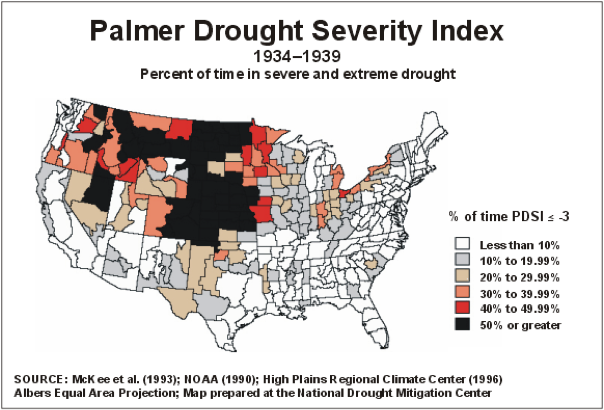
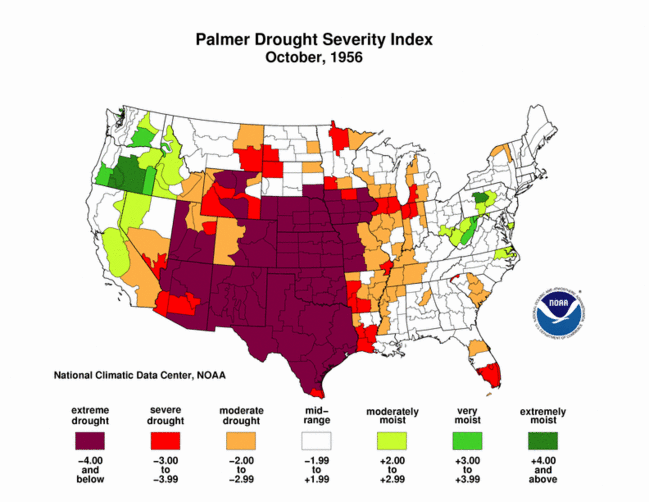
It does beg a question, however. Whither the decadal scale droughts of our past?
Our droughts have changed characteristics here in the Southern Plains and
Oklahoma, at least compared to our more distant past. Here's a look at
everybody's favorite graph, the statewide average annual precipitation totals
for Oklahoma since 1895 with a 5-year moving average line thrown in. Each black
square is an annual average, the long thick line is the long-term average and
the wavy line is the 5-year running average. Green indicates a wet period
(pluvial) and brown indicates a dry period.
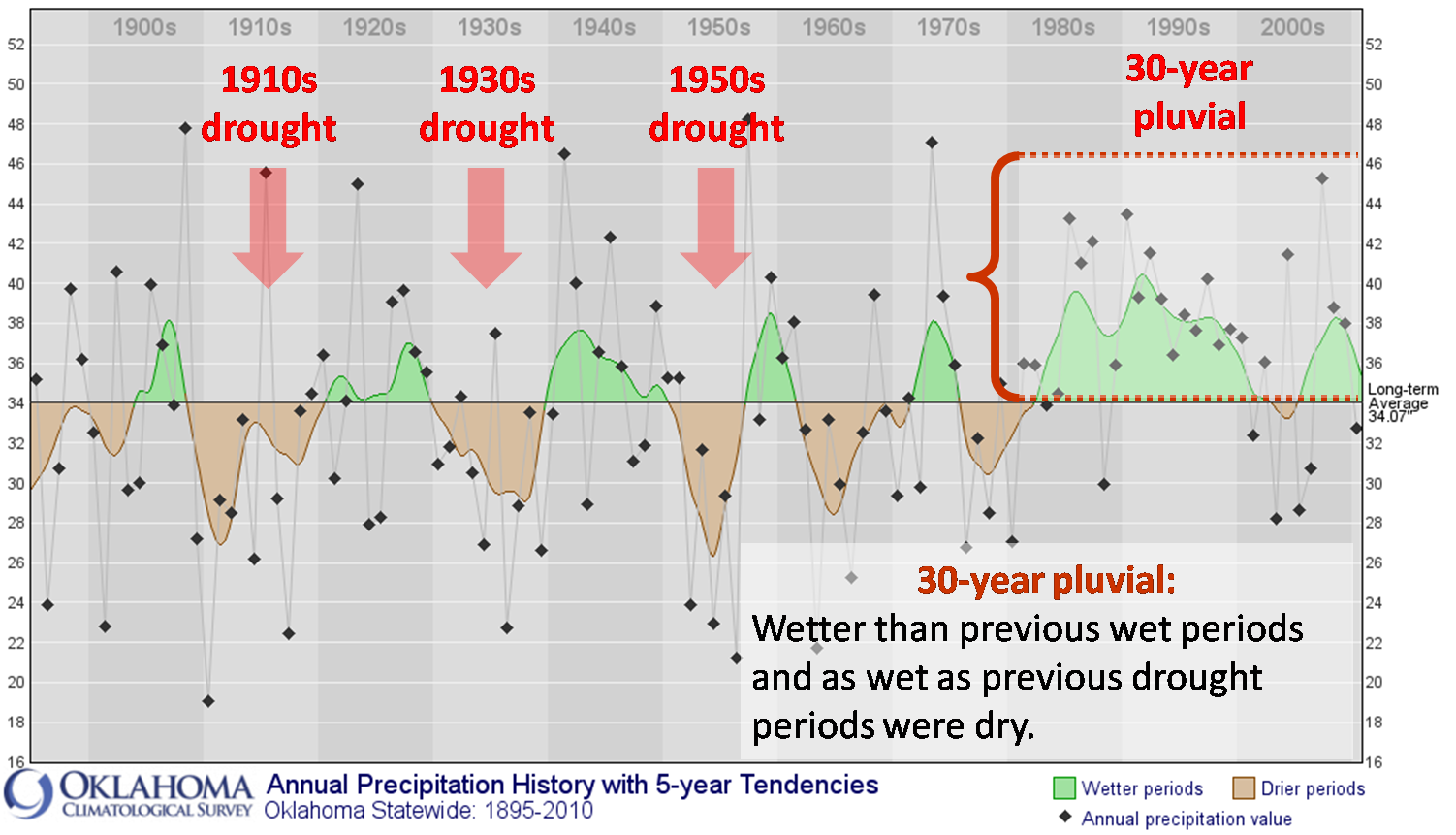
The three big droughts of our past -- the 1910s, 1930s and 1950s -- stand out
quite plainly. The 1960s was also a dry period but the characteristics of that
decade don't quite match the other decadal scale droughts. The 1960s were
punctuated by two shorter term severe droughts from spring 1963/summer 1964 and
winter 1966/summer 1967. Also quite evident is the regime change from a
decadal scale drought every 20 years to the pluvial of the last 30 years or so,
interspersed with very noticeable shorter (but severe) drought periods. And
that's precisely how drought characteristics in our part of the world have
changed, from decadal scale to short-yet-severe episodes.
Is the current drought the start of one of those infamous decadal-scale droughts
of our past (i.e., the 1910s, 1930s or 1950s)? That's difficult to say, of
course. Research shows that those droughts correlate fairly well to sea surface
temperature anomalies in the Pacific or Atlantic oceans, or some combination
thereof. The 1950s drought, arguably the drought of record (1900 forward) for
the Southern Plains, has been linked to a combination of La Nina and the
negative phase of the Pacific Decadal Oscillation (PDO).
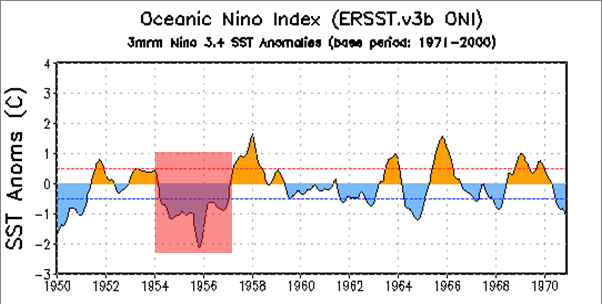
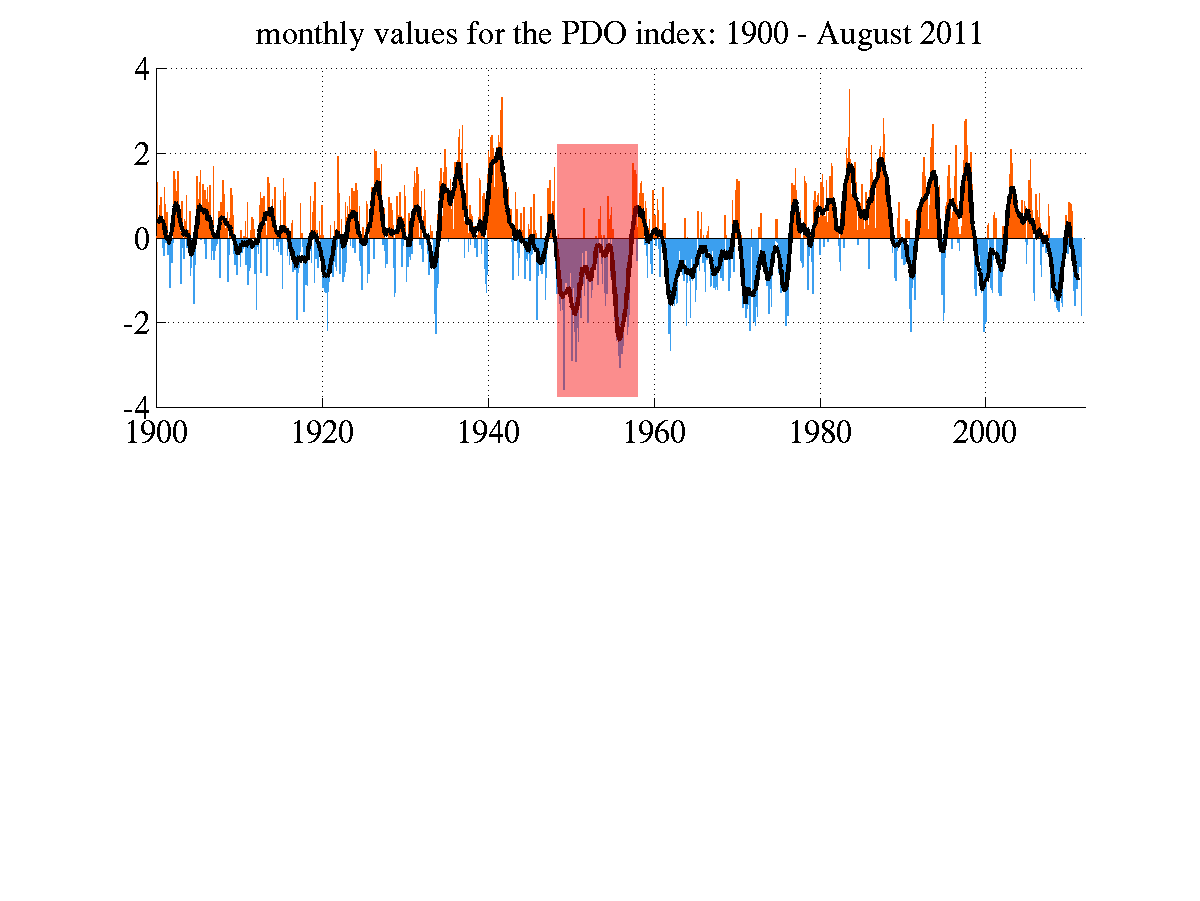
I mention that since we are currently in those exact conditions ... La Nina and
the negative phase of the PDO. I'm certainly not predicting this to be one of
those decadal scale droughts of our past. There is still much to learn about
oceanic influences (and influences unknown) and how they affect the
drought/pluvial cycle of the Great Plains.
However, it is very curious.
Gary McManus
Associate State Climatologist
Oklahoma Climatological Survey
(405) 325-2253
gmcmanus@mesonet.org
September 27 in Mesonet History
| Record | Value | Station | Year |
|---|---|---|---|
| Maximum Temperature | 101°F | BUFF | 2019 |
| Minimum Temperature | 36°F | OILT | 2010 |
| Maximum Rainfall | 2.86″ | CLAY | 2012 |
Mesonet records begin in 1994.
Search by Date
If you're a bit off, don't worry, because just like horseshoes, “almost” counts on the Ticker website!